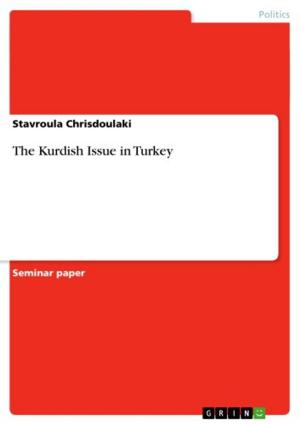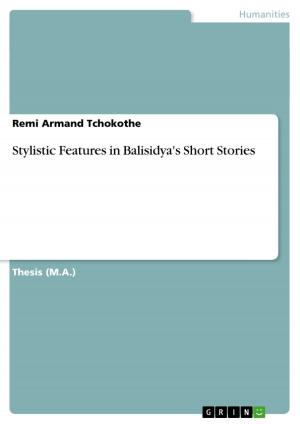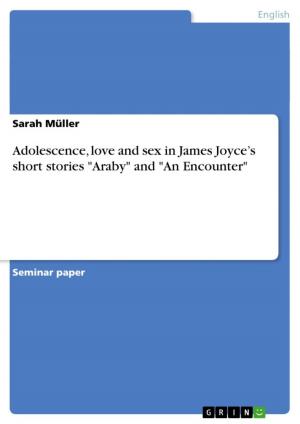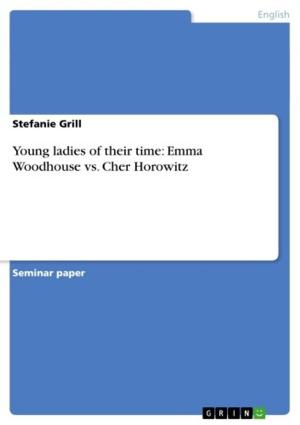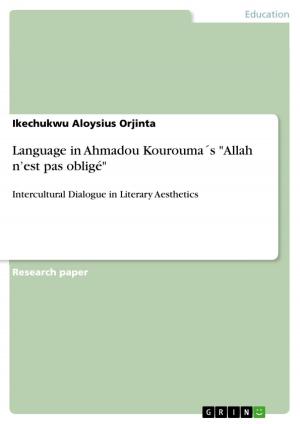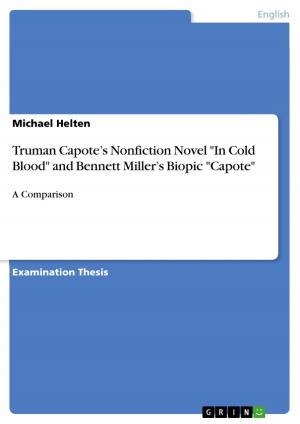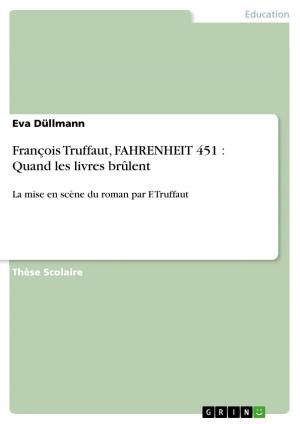Seducing the Reader
The Narrator's Influence on the Reading of Hannah Primrose in Elizabeth Inchbald's 'Nature and Art'
Fiction & Literature, Literary Theory & Criticism, British| Author: | Franz Kröber | ISBN: | 9783656189954 |
| Publisher: | GRIN Publishing | Publication: | May 14, 2012 |
| Imprint: | GRIN Publishing | Language: | English |
| Author: | Franz Kröber |
| ISBN: | 9783656189954 |
| Publisher: | GRIN Publishing |
| Publication: | May 14, 2012 |
| Imprint: | GRIN Publishing |
| Language: | English |
Essay from the year 2012 in the subject English Language and Literature Studies - Literature, grade: 1,0, University of Kent (School of English), course: Eighteenth Century Literature, 1750-1830, language: English, abstract: Hannah Primrose in Elizabeth Inchbald´s 'Nature and Art' does not appear to be a role model of a virtuous and domesticated eighteenth-century girl. Regarding the strict rules of the British society in the eighteenth century, the average reader back then must have detested Hannah or at least changed complexion every time his or her eye beheld her name. Yet, Inchbald somehow manages to create a figure that refuses to comply with the dichotomy of the fallen monster-women and the domesticated angel.In 'Nature and Art', the condemned seduced maiden is pictured as a victim of her lover and the circumstances of her time. Moreover, Inchbald uses the narrator as a means to render the reader´s compassion for Hannah, and attempts to shape his or her attitude towards the heroine. The author makes her narrator present Hannah´s inner conflicts and thoughts which picture her as just the virtues woman described above, makes the narrator express her own sympathy for Hannah by addressing her or other characters, and makes her directly and indirectly address the reader in order to shape her attitude towards the heroine. The analysis of these narrative techniques and their consequences for the reader´s opinion of Hannah will be preceded by a brief outline of the seduced women in eighteenth-century Britain in order to justify the idea that a reader back then could have felt compassion for fallen women.
Essay from the year 2012 in the subject English Language and Literature Studies - Literature, grade: 1,0, University of Kent (School of English), course: Eighteenth Century Literature, 1750-1830, language: English, abstract: Hannah Primrose in Elizabeth Inchbald´s 'Nature and Art' does not appear to be a role model of a virtuous and domesticated eighteenth-century girl. Regarding the strict rules of the British society in the eighteenth century, the average reader back then must have detested Hannah or at least changed complexion every time his or her eye beheld her name. Yet, Inchbald somehow manages to create a figure that refuses to comply with the dichotomy of the fallen monster-women and the domesticated angel.In 'Nature and Art', the condemned seduced maiden is pictured as a victim of her lover and the circumstances of her time. Moreover, Inchbald uses the narrator as a means to render the reader´s compassion for Hannah, and attempts to shape his or her attitude towards the heroine. The author makes her narrator present Hannah´s inner conflicts and thoughts which picture her as just the virtues woman described above, makes the narrator express her own sympathy for Hannah by addressing her or other characters, and makes her directly and indirectly address the reader in order to shape her attitude towards the heroine. The analysis of these narrative techniques and their consequences for the reader´s opinion of Hannah will be preceded by a brief outline of the seduced women in eighteenth-century Britain in order to justify the idea that a reader back then could have felt compassion for fallen women.



